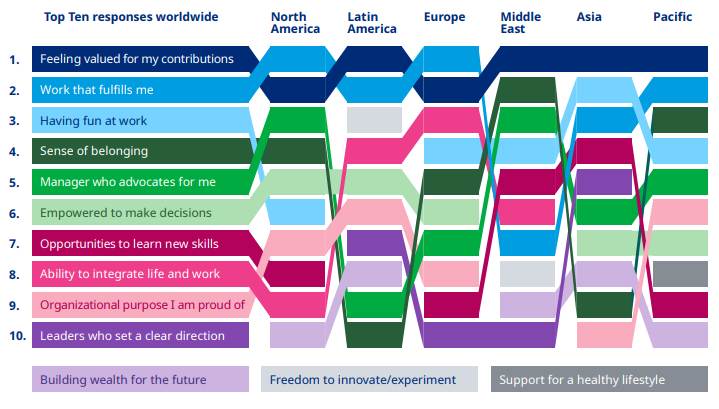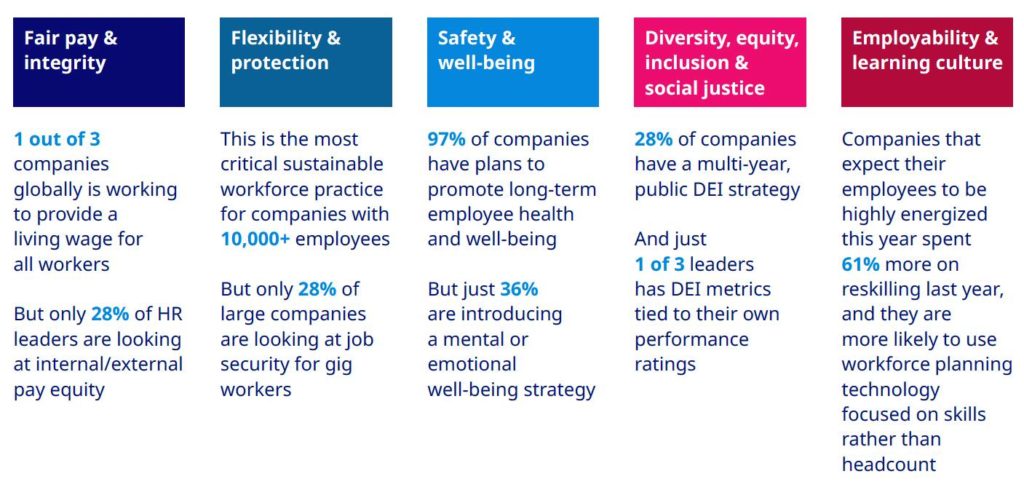Talent attraction and retention are top of mind for executives across Asia, with seven in 10 executives saying they face a labour shortage crisis – a concern most pronounced in Japan (88%) and China (75%).
The talent challenge shows no signs of abating. Despite 85% of employees in Asia feeling satisfied in their current role, nearly two in five still plan to leave in the next six to 12 months. This pressures organisations to keep up with evolving employee expectations of work and the workplace.
Drawing on insights from nearly 11,000 C-suite executives, HR leaders and employees globally, Mercer’s 2022 Global Talent Trends Study: The Rise of the Relatable Organisation highlights how winning organisations prioritize reskilling and well-being while partnering with employees to co-create the new shape of work.

The option to work remotely is a deal-breaker
One in two employees across Asia says the future of work is about balance – fitting work around life and no longer life around work. Compared to 2020, employees today say they are more likely to stay with their employer due to “life” related factors, such as flexibility and time off, compared to “work” related factors, such as career progression and development.
One in three employees in Asia is willing to forgo pay increases to be able to work flexibly, closely followed by well-being benefits. Nearly seven in 10 employees (with the exception of Japan at 51%) say not being able to work remotely or hybrid permanently is a deal-breaker when considering whether to join or stay with an organisation.
However, more so than employees in Asia and organisations globally, executives in Asia are concerned about the impact of permanent hybrid and remote working, especially the ability to build and maintain colleague relationships (89%).
Seven in 10 also believe fundamentally that work gets done in an office, not remotely. With 48% of organisations in Asia saying they are struggling with scaling up and sustaining hybrid work, there is significant work to be done in evolving their flexible work culture.

Puneet Swani, career business leader, AMEA, Mercer, commented that employers need to bridge the gap in expectations and embrace new, flexible work models to cultivate a workforce that can design their own careers.
"Those who find that balance and align their policies to the wants and needs of their employees will not only boost the motivation and engagement of their existing workers but also will win the best talent,” he added.
Build for employability
The pandemic supercharged companies’ race to reskill, with organisations globally investing more than US$2,800 per learner in reskilling last year, up from US$1,400 in 2020. However, it is unclear if the investment is paying off. Up to 95% of employees in Asia reported recently learning a new skill, yet a staggering 97% of companies report significant skill gaps in their organisation.

3 Pew Research Center. “The Great Resignation: Why Workers Say They Quit Jobs in 2021.” Available at www.pewresearch.org.
While providing opportunities to reskill and upskill is top of the people agenda of organisations in Asia in 2022, barriers remain. Lack of time aside (36%), one in four employees said they are not sure which skills to focus on as well as where to go to learn a new skill for work. HR leaders, too, have their reservations.
They find it difficult to keep up with the pace of change and emerging skill needs (37%), identify employees with the most potential to leverage new skills (36%) effectively and are concerned that upskilled talent will leave the firm (35%).
Addressing skill gaps is more pressing than ever for organisations to realise their strategy, meet evolving business needs and ensure the employability of their talent well into the future. The good news is HR leaders in Asia are looking to build skills internally instead of acquiring talent, a significant shift from pre-pandemic. They also see the greatest impact from targeted learning investments (42%) and experiential learning through internal rotations (42%).
Swani added that despite an uptick in experimentation during the pandemic to close the skills gap, companies in Asia and their employees are still very much in the learning phase. "Employers need to figure out how they can offer more opportunities for employees to pick up new skills and make rewarding skill acquisition more visible throughout the organisation," he continued.
Focus on well-being
The percentage of energised employees has dropped significantly from 74% in 2019 to 63% this year – the lowest level in the study’s seven-year history. Across Asia, the number dipped to 56% and 44% for Japan and Singapore respectively, well below the regional average of 68%.
Eight in 10 employees in Asia, including 95% in Hong Kong, feel at risk of burnout this year. With 98% of organisations planning significant transformation this year, the collective fatigue could put these plans at risk. Yet only one in four executives and HR leaders in Asia view employee exhaustion as a threat to transformation or driver for attrition.
Swani said, “The silver lining is that one in three executives in Asia sees prioritising employee well-being as the people initiative that will deliver the greatest ROI in the next two years. As companies transform, it will be critical to rethink the employee experience and their well-being strategy more holistically and inclusively. Enhancing digital adoption, improving the communication of strategic vision, and addressing organisational complexity will be key.”
Understanding the talent drivers
A fundamental change in people’s values is underpinning a structural shift in the labour market. With a record number of employees switching jobs last year, understanding talent drivers is critical. After job security, organisational brand and reputation is the #2 reason for employees who joined their current employer, up from #9 before the pandemic. Staying relevant requires organisations to listen intently to their stakeholders and walk the talk on their core values through company purpose and work standards.
Renée McGowan, president – Asia, Middle East & Africa, Mercer, said, “Recovery in the region remains fragile amid challenges of rising inflation, geopolitical conflicts, climate change and digitalization."
She noted that a top worry for executives in Asia is business resilience, which is closely intertwined with the resilience of their workforce. A thriving workforce creates a thriving business.
"Now more than ever, organisations need to consider the role of all their employees in shaping solutions and addressing challenges from hybrid work and well-being to reskilling and sustainability – so they’ll feel more relevant, connected and valued,” she concluded.





